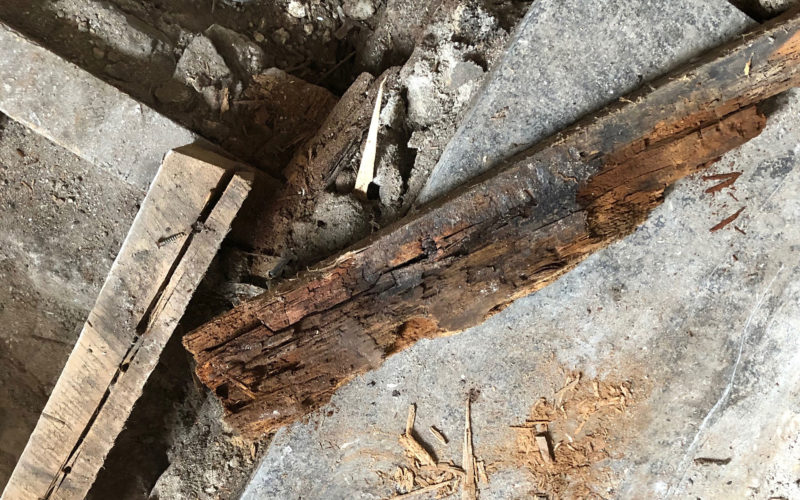An outbreak of dry rotting fungus is very different from one of wet rot. Dry rot can be a complex as it has the capacity to effect timbers, masonry, plasterwork and develop mycelium (branch like structures) which transport moisture and nutrients over long distances to previously unaffected areas.
The mycelium form strands and work their way behind plaster, through permeable bricks and mortar and effectively penetrate masonry. If the strands reach damp timbers a new outbreak will occur.
Dry rot is facilitated by damp, poorly ventilated and fluctuating conditions.
Often the first sign of dry rot is a ‘fruit body’, which looks like a fleshy yellow ochre pancake. Over time it matures to a rusty red colour. The fruit body generates a profuse quantity of spores, which settle as a reddish brown dusty layer.
Mycelium will appear as silky white sheets and or a cotton wool like appearance with yellow tinges. Strands of white or grey ‘branching’ may be evident; these can reach the thickness of a pencil.
The removal of the fruit body, Mycelium and spores should not be undertaken as a DIY task, nor should the treatment. There are many stages to the sterilisation, replacement of effected timbers and masonry and the prevention of a further outbreak.
Although dry rot can be very serious, these outbreaks can be treated very successfully by a specialist company such as Sovereign Preservation, so it is important to get professional advice as soon as possible.
– Identification and specialist treatment specification
– Safe removal and disposal of effected timber and masonry
– Sterilisation and reinstatement
– Up to 30 year guarantees available



